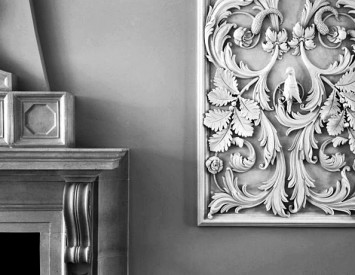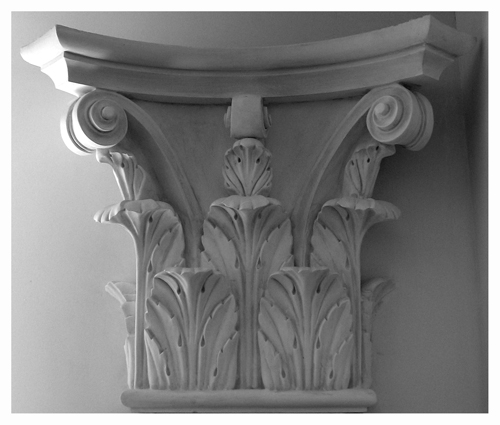Stecin has always been a sign of wealth and luxury. And today, stucco decor elements confidently gain popularity among owners of mansions and apartments who want to arrange a semblance of Versailles in their home.
Content
In this collection, we will talk about the installation of gypsum stucco molding. But, for starters, a little general information about stucco molding as such.
Stucco molding is usually made of raw materials, which can change its condition from liquid to solid, not subject to cracking.
What is the stucco
- clay;
- gypsum;
- cement;
- fiberglass;
- metal;
- glass -composite.
The last three materials are not standard basic components for creating stucco molding, but details of them are not much different visually.
Characteristic features of stucco molding of various eras of art development
- The Baroque era - gold, pink or turquoise background+white stucco molding (lion heads, floral ornaments, etc.).
- The era of classicism - flat relief frames and a panel for the ceiling (garlands, monsters, ammurs, halust, sphinxes).
- The period of modernism - plants and animals intertwined in bizarre ornaments, marinistic themes, smooth lines of reliefs.
What is good stucco molding from gypsum?
- Environmental Safety.
- Refractory.
- White color.
- Availability.
Functions of stucco molding
- Aesthetic. The stucco products, in this case, plays a purely decorative role, i.e., it simply decorates the interior. It can be columns in the facade part of the building, fantasy outlets for chandeliers, various panels, the installation of which is usually carried out in the area of \u200b\u200bthe stairs to the second floor or in empty niches. In some of the mansions today, rebuilt “under the old days”, even the elements of the stairs itself are decorated with stucco details, the installation of which is possible with their own hands. Moreover, the instructions for the installation of stucco molding in the area of \u200b\u200bthe stairs are identical to the installation technology on the walls and ceiling structures. Its standard steps are described below.
- Practical. Some stucco details “hide” various functional, but not very aesthetic things (wiring, various purposes, defects, etc.) mainly, the role of peculiar shields of various purposes is performed by cornices and moldings. Although this purpose does not at all abolish the aesthetic component.
How to fix stucco?
Previously, a mixture of glue and gypsum was widely used to dock stucco molding with a wall surface. But this mixture must be kneaded in certain proportions. It is troublesome and long. There is a great alternative to the "grandfather" method.
Today, the most practical glue is liquid nails. This is a material created from polymers and rubber that can withstand heavy loads. A variety of variations of this glue are distinguished by the time of setting (10-30 minutes) and the duration of polymerization (up to 1 day), the content of additives. Therefore, you should carefully study the instructions before purchasing.
Types of stucco molding
- Half -columns and columns. The diameter of these decorative details: 14-35 cm. They consist of three components. This is the base (lower part), the trunk and the capital (upper part).
- Pilasters. The same half columns, but not voluminous.
- Cornices. Elements, the purpose of which is cultivating the joint line of the ceiling and wall structures.
- Moldings. A similar element, designed for the equipment of hidden lighting devices and other communication elements.
- Sockets. They play the role of ceiling decorations for creating lamps and chandeliers.
- Decorative wall stucco molding, for rheat, doors and recesses in the form of niches (various medallions and garlands).
- Falled stucco parts for doors and walls.
Examples of stucco molding from gypsum can be seen in the photo below:
Installation of stucco moldings
What needs to be prepared?
- dry gypsum;
- water;
- dishes for gypsum mass kneading;
- forms of PVC;
- putty knife;
- sandpaper;
- pVA putting on the basis of PVA;
- liquid Nails;
- paint or other finishing material.
The course of work
- Carefully open dry gypsum, removing lumps.
- Dilute with water to a cream -shaped state.
- Stir diligently until smooth.
- Fill in a mass form.
- Remember the spatula.
- Leave for 10-15 minutes at a natural temperature for grasping (hasty hardening using heating objects can cause cracks).
- After completely solidified, remove the stucco part from the mold.
- Leave it for 2-3 days to dry.
- Pull out using sandpaper.
- Glue the part to the desired place using liquid nails (according to the instructions).
- Do this with all the details of the stucco pattern.
- Set the joints with PVA -based putty.
- Let it dry.
- Snipple again.
- Apply a coloring substance to stucco parts.
Feature features and other types of stucco decoration
Coloring methods
- Classical. In this case, stucco molding is made the same color as all the main elements of the interior.
- Modern. It all depends on the flight of fantasy. Contrast solutions, gradient painting and even multi -colored options - everything is permissible.
Other methods of stucco decoration
- Patina or wax coating. In addition to leaving the original texture surface, this coating also plays a protective role, protecting the gypsum thickness from addictions and mechanical destruction.
- Imitation of various textures through the use of special dyes and auxiliary substances applied by a sponge or fabric (for lack of a special sprayer). Outwardly, such stucco molding will be like an artificial stone.
The main types of paints used for stucco decoration
- Mosaic dyes. Inside such colors are capsules of different shades, bursting during application, creating a marble effect. The size of the capsules determines the final pattern. For application, it is better to take a sprayer.
- Luminescent dyes. With their help, an interesting effect of glow in the dark is achieved. In the light of stucco molding, it is no different from the classical one.
- Persian dyes. The coating of such colors gives stucco molding the effect of the "chameleon", it looks different from different points and at different angles of view. Such a dye can be applied both with a pistol sprayer, and a roller, sponge or brush.
Creative effects that are obtained using the latest staining techniques
- Artificial aging. To obtain such an effect on the gypsum surface, paint on a lime base is applied in circular strokes, using a brush with a long pile. The paint, which has stuck into the hollows of the volumetric pattern, seems darker than on the protruding parts. For a greater effect, paint on outstanding elements can be wiped with a rag. After waiting for complete drying, the “aged” stucco is opened with wax.
- The "watercolor" effect. This visual illusion is achieved by applying the main layer from the paint of one shade of a layer of paint of a different color, blurred even before stagnation so that both dyes of different tones are visible on the stucco. The texture of the picture depends on the use of various tools (a piece of foam rubber, a roller in a suede cover, a brush, a piece of fabric, crumpled cellophane).
- The effect of "artificial leather." The stucco molding is painted and allowed to dry a little (not to the end). Then the embossed pattern is covered with crumpled polyethylene or suede, without leveling and allowed to dry. Then the covering layer is removed, and the drawing “under the skin” is ready!
- Imits of the wood texture will help to achieve a special roller.
- The imitation of the marble texture is achieved by applying small spots of contrast paint on the dried stucco stucco and a quick connection with a goose pen.
Installation of stucco molding is not so complicated in the implementation, provided that modern techniques and raw materials are used. However, this process is laborious and requires some dexterity and patience. However, not holy pots are sculpted ...


























